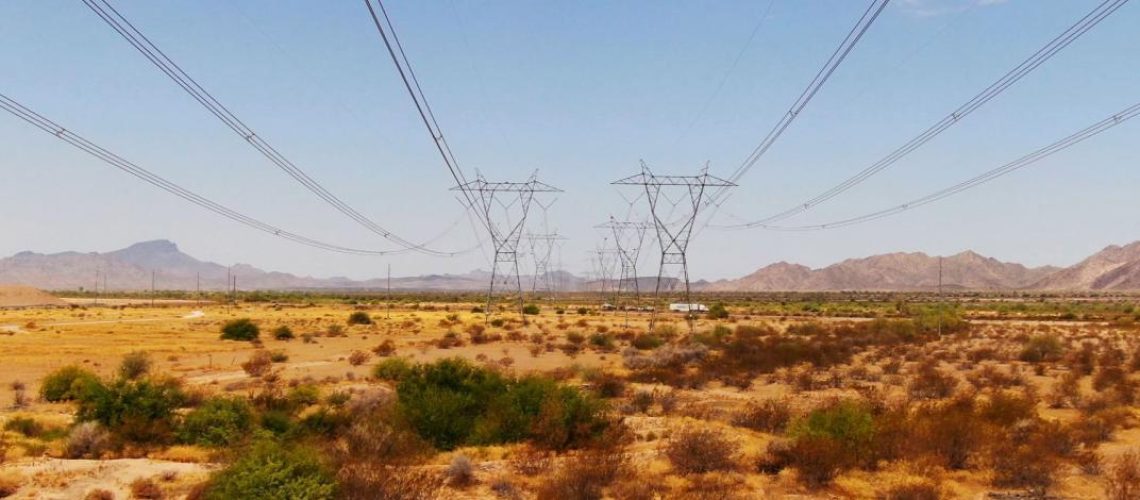The “efficient process solution” to interconnecting large-scale renewables and storage “is a combination of the ‘connect and manage’ interconnection approach with comprehensive regional transmission planning,” said Hannah Muller, head of markets and policy at Clearway Energy Group, on a webinar hosted by Advanced Energy United.
Greg Geller, vice president and head of regulatory affairs for Enel North America, said on the webinar that he also favors both approaches, and explained their advantages.
Advanced Energy United presented the webinar as the Federal Energy Regulatory Commission (FERC) is completing work on a rule aiming to increase the speed and reduce the costs of interconnecting utility-scale renewable and storage projects. Muller and Geller focused their recommendations on further improvements that could be instituted after FERC issues its rule.
Explaining the “connect and manage” approach, Geller said “assume you have a 200 MW project.” Some transmission system operators, he said, study projects based on how they will be dispatched “in real time. And if in real time that project would cause a constraint” if 200 MW were dispatched, a “connect and manage” approach would instead dispatch 100 MW for the time period needed.
The “connect and manage” approach focuses interconnection studies on more local upgrades, both executives noted.
Geller said the approach would bypass problems documented in a case study his firm prepared of a planned 300 MW wind farm. For that project, the grid operator’s interconnection study found that “a few megawatts were flowing onto the grid 1,000 miles away,” and as a result, the project and several others were assigned several upgrades. “We all became interdependent on one another. When one of those projects withdrew, a restudy had to happen. And this kept happening. It’s a vicious cycle.”
Texas grid operator ERCOT uses an approach similar to “connect and manage,” and is moving quickly to interconnect new renewable generation.
Geller added that comprehensive regional transmission planning is better than building transmission “piece by piece” through the interconnection process. He cited two studies by grid operator PJM Interconnection on the onshore costs of connecting offshore wind to the PJM grid. The first study, assuming new transmission was planned through interconnection studies, identified onshore costs of $6.4 billion for 15.5 GW of offshore wind, but the other found that if transmission were planned all at once, nearly five times the wind capacity (75 GW) could be interconnected with just half of the onshore costs ($3.2 billion).
Systematic transmission planning within grid regions has been conducted by midcontinent grid operator MISO and California grid operator CAISO.
Automation
Grid operators and utilities “are working hard to staff up to get interconnection studies done,” said Muller. “The studies are labor-intensive. We hear it’s hard to find qualified engineers, we hear the complaints that our industry is hiring those engineers away. That is true. We are guilty of that. It’s because this clean energy transition is in high demand.”
“We know it’s hard, and we can do it,” Muller said. “We need a little more ambition, at a number of levels.” She said staffing plus new tools and automation can help speed interconnection studies, pointing to funding from the U.S. Department of Energy for technical assistance, fellowships, and engineering school partnerships, as well as a number of automation options.
“There’s a lot of promise in automation,” said Muller, discussing a list of automation suggestions made by commenters on FERC’s draft interconnection rule. She presented a slide showing that interconnection study processes by transmission system operators could involve “automated study model construction from online data submission, automated cluster studies (with solutions to be reviewed by transmission system operators), and automated drafting of study reports.” Automation could also improve application quality and reduce customer service burdens, she said.
Xing Wang, an executive with Amazon Web Services, said last year that artificial intelligence could enable faster and more accurate modeling for interconnection studies.
Tesla said last year in comments on FERC’s proposed interconnection rule that the company could estimate a project’s interconnection costs in two weeks if it had access to grid models.
Solutions mindset
To make further progress on interconnection, “we need to convene” the utilities, developers and transmission system operators, said Geller, and “come with a solutions oriented mindset. It needs to happen really quickly.”
“Advanced Energy United is very interested in having that conversation,” said Caitlin Marquis, the group’s managing director for wholesale markets and the webinar’s moderator, “with anyone listening who would like to be a part of it.” Without “significant reform,” she said, the interconnection process “will only continue to get slower and more expensive.”
The Department of Energy’s i2X initiative, which also convenes interested parties, set a draft goal last December to reduce interconnection schedules and costs for large-scale renewable and storage projects by 50% within five years.
The solar and storage industries provided substantial input to FERC last year as the commission began developing its interconnection rule.
Research
Abe Silverman, managing director of a Columbia University program on non-technical barriers to the clean energy transition, also spoke on the webinar and described two research projects he is conducting. The first will examine why many renewables and storage projects that have completed the interconnection study process and received an interconnection agreement still drop out at that stage. His second study will address “What should FERC do next?”—that is, after FERC issues its forthcoming rule on interconnection.



